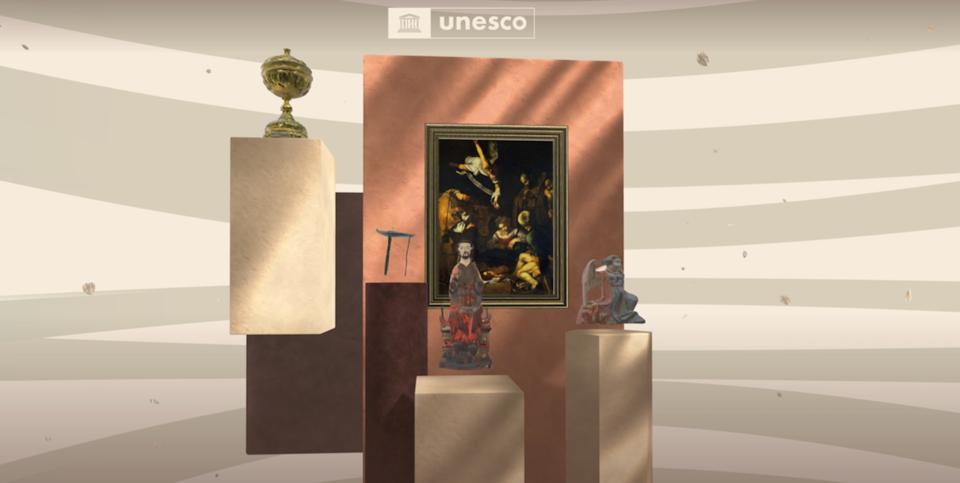While museums everywhere strive to expand their collections, a new one opened last week with the opposite goal — to shrink its holdings until there’s nothing left to display.
That museum is UNESCO’s Virtual Museum of Stolen Cultural Objects. The immersive digital platform spotlights plundered cultural treasures, aiming to raise awareness of the scope and impact of the theft and illicit trafficking of global artifacts that carry valuable stories of history and shared identity.
Museum-goers will encounter a range of displaced artifacts — 2,000-year-old marble sculptures of mythological Roman gods and goddesses, 600-year-old bronze and gilded Buddha statues, medieval medallions, 17th century Baroque paintings, a historical treatise chronicling scientific discoveries by Galileo and official 19th century paperwork documenting Peru’s transition to independence from Spanish rule. Fascinating as these items may be, if UNESCO has its way, they won’t remain on virtual display for long.
“As stolen objects are recovered and restituted, they will be removed from the digital collection, symbolizing justice and restoration,” UNESCO (the United Nations Educational, Scientific and Cultural Organization) said in a statement.
There’s An App For That
The digital platform currently showcases over 250 cultural objects submitted by more than 40 countries. Visitors can browse the “Stolen Cultural Objects Gallery” by region, exploring objects in 3D (drag and drop to rotate them), learning about their background and reading testimony about their cultural significance from the communities they were stolen from. The site is also available for viewing with a VR headset.
The objects represent only a small sampling of stolen cultural property, mostly swiped from private collections, museums and places of worship by criminals who then taint the legitimate art market with them. The international police organization Interpol, a partner in the virtual-museum project, estimates that some 57,000 stolen items are circulating around the world. Interpol hosts a database with certified police information on stolen and missing objects of art. It also launched a mobile app, ID-Art, that law enforcement, customs officials, art dealers, private collectors, students or anyone else can use to identify stolen cultural property.
Scattered across centuries and continents, some of these objects tell stories of people who left an indelible mark on history and humanity. Among such items featured in the virtual museum are a first edition of Sidereus Nuncius (“Starry Messenger”), a short astronomical treatise by Galileo from 1610 that marked the first published document containing observations made with the newly invented telescope. In it, the famed astronomer wrote in Latin about the moon’s surface, previously unseen stars in the Milky Way, and most famously, four moons orbiting Jupiter.
African-German architect Diébédo Francis Kéré designed the UNESCO museum, taking inspiration from the baobab, a deciduous tree that in African culture symbolizes resilience and rootedness. The site’s look projects a hopeful tone: Beams of digital sunlight spill into the exhibition spaces and circular shapes evoke a sense of return.
UNESCO announced the museum last Monday at Mondiacult, its global conference on cultural policies and sustainable development, held this year in Barcelona. It hopes the project will foster global solidarity in the effort to combat heritage theft and trafficking and promote provenance research in the art market so these relics stand a better chance of being returned to their rightful custodians.

